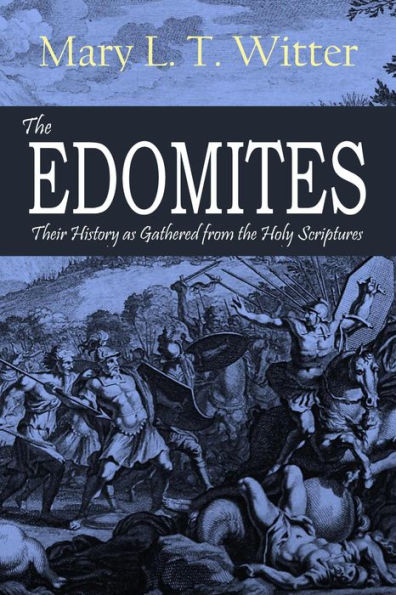"Immediately before the siege of Jerusalem by Titus, 20,000 Idumaeans were admitted into the holy city ... from this time the Edomites as a separate people, disappear from the page of history." -Mary Witter
In 1888, Mary L. T. Witter, of Berwick, Nova Scotia and author of religious works published "The Edomites: Their History as Gathered from the Holy Scriptures." As noted by the title, in this book Witter compiles the history of the Edomites as gathered from the Biblical sources.
In introducing her book Witter notes that "surely the study of a people to whom reference is made—sometimes frequent reference —in twenty-four of the books of the Bible cannot be without profit. That the history of the Edomites is extremely fragmentary is admitted, but that circumstance has been to my mind an incentive to attempt the compilation."
After going through the Biblical accounts of the Edomites in great detail, from Esau to the siege of Jerusalem by Titus, Witter concludes that "the Scriptures plainly teach that the great Supreme is a God of justice as well as a God of mercy. The destruction of the ante-deluvians, of the cities of the plain, and the story of the Amalekites may be adduced as instances in proof of this assertion. But in the history of no people is God's displeasure against sin, and his inflexible justice more legibly written than in that of the Edomites."
Contents:
I. THEIR ANCESTRY.
II. Rebekah's Journey.
III. THE BIRTH OF ESAU—HE SELLS HIS BIRTHRIGHT.
IV. ESAU IS DEPRIVED OF HIS FATHER'S BLESSING.
V. THE LAND OF EDOM
VI. ESAU'S INTERVIEW WITH JACOB AT THE JABBOK.
VII. THE HORITES.
VIII. THE DUKEDOMS AND THE EARLY KINGDOM OF EDOM.
IX. DOEG
X. HADAD.
XI. EDOM, A DEPENDENCY OF JUDAH.
XII. THE KINGDOM OF EDOM.
XIII. THE HERODIAN FAMILY.
XIV. THE HERODIAN FAMILY—(Continued.)
XV. CONCLUSION.
The Hebrew word Edom means "red", and is derived from the name of its founder, Esau, the elder son of the Hebrew patriarch Isaac, because he was born "red all over". As a young adult, he sold his birthright to his brother Jacob for "red pottage". The Tanakh describes the Edomites as descendants of Esau. Perhaps referencing this familial connection, the Old Testament commands: "Thou shalt not abhor an Edomite; for he is thy brother." ~Deuteronomy 23:7
Edom was an ancient kingdom in Transjordan located between Moab to the northeast, the Arabah to the west and the Arabian Desert to the south and east. Most of its former territory is now divided between Israel and Jordan. Edom appears in written sources relating to the late Bronze Age and to the Iron Age in the Levant, such as the Hebrew Bible and Egyptian and Mesopotamian records.
The study of the history of Edomites has recently gained popularity among Black Hebrew Israelites (also called Black Hebrews, African Hebrew Israelites, and Hebrew Israelites), groups of Black Americans who believe that they are descendants of the ancient Israelites. Black Hebrews adhere in varying degrees to the religious beliefs and practices of both Christianity and Judaism. One belief often expressed is a belief that Europeans are descendants of Esau, also known as Edom. (Genesis 25:25).



